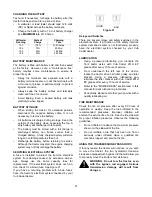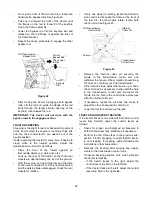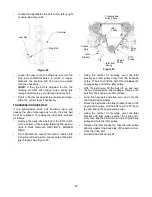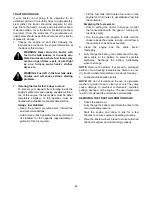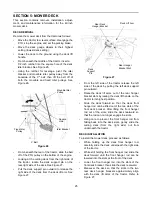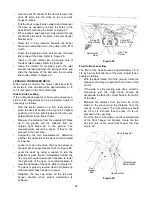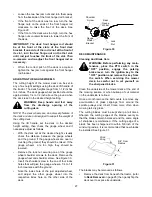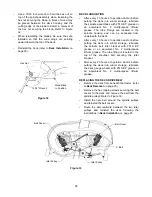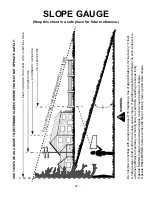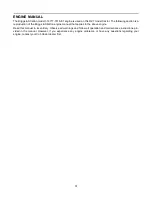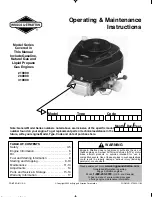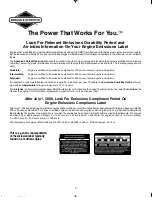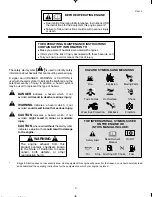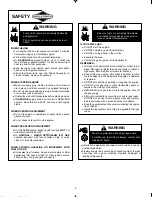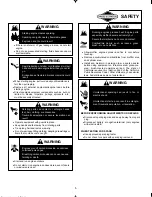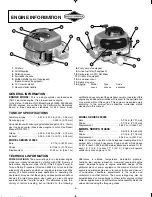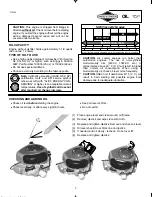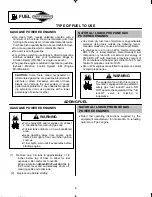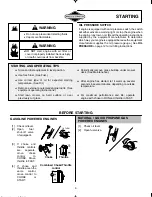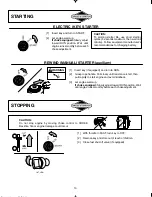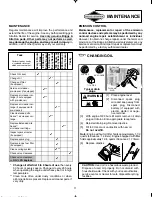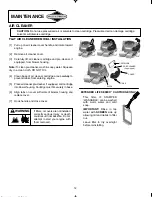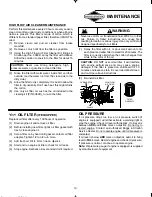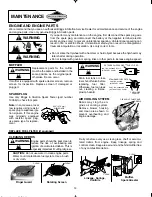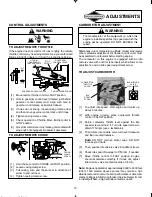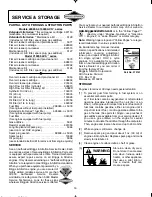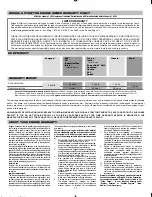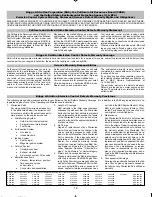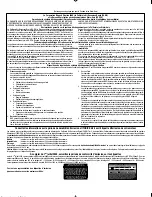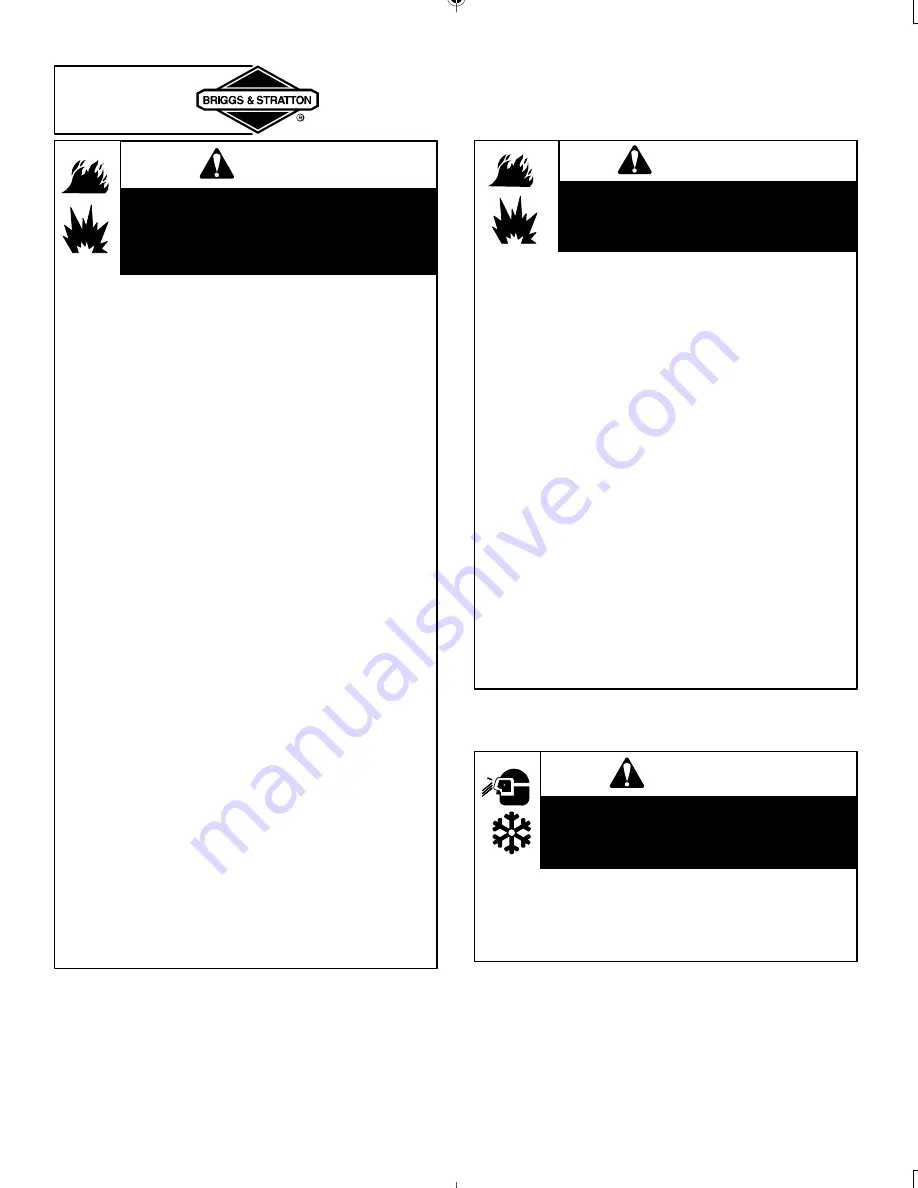
Document: - page 4 (Black)
Screen angle and frequency: 45.0000, 150.0000
4
SAFETY
Fuel and its vapors are extremely flammable
and explosive.
Fire or explosion can cause severe burns or
death.
WARNING
WHEN FUELING
•
Turn engine OFF and let engine cool at least 2 minutes
before removing cap or refueling engine.
•
Fill fuel tank outdoors or in well-ventilated area.
•
On
GASOLINE
operated engines, do not overfill fuel
tank. Fill tank to approximately 1-1/2 inches below top of
neck to allow for fuel expansion.
•
Keep fuel away from sparks, open flames, pilot lights,
heat, and other ignition sources.
•
Check fuel lines, tank, cap, and fittings frequently for
cracks or leaks. Replace if necessary.
WHEN STARTING ENGINE
•
Make sure spark plug, muffler, fuel cap and air cleaner
are in place, and firmly secured by equipped fasteners.
•
Do not crank engine with spark plug, air cleaner cartridge
or air cleaner cover removed.
•
If fuel spills, wait until it evaporates before starting engine.
•
If
GASOLINE
engine floods, set choke to OPEN/RUN
position, place throttle in FAST and crank until engine
starts.
WHEN OPERATING EQUIPMENT
•
Do not tip engine or equipment at angle which causes
gasoline to spill.
•
Do not choke carburetor to stop engine.
WHEN TRANSPORTING EQUIPMENT
•
On GASOLINE engine, transport with fuel tank EMPTY or
with fuel shut-off valve OFF.
•
On
NATURAL / LIQUID PETROLEUM (LP) GAS
engines transport with fuel cylinder empty or valve
closed, or tank disconnected.
WHEN STORING GASOLINE OR EQUIPMENT WITH
FUEL IN TANK
•
Store away from furnaces, stoves, water heaters or other
appliances that have pilot light or other ignition source
because they can ignite gasoline vapors.
WARNING
Gaseous fuels are extremely flammable
and readily form explosive air-vapor mix-
tures at ambient temperatures.
IF YOU SMELL GAS:
•
DO NOT start the engine.
•
DO NOT actuate any electrical switches.
•
DO NOT use the phone in the vicinity.
•
Evacuate the area.
•
Contact the gas supplier or fire department.
REMEMBER:
•
LPG vapor is heavier than air and trends to collect in low
areas. NG vapor is lighter than air and tends to collect in
high areas. Both may travel to remote locations.
•
Keep all flames, sparks, pilot lights, and other ignition
sources away from the area where the engine is operated
or repaired.
•
DO NOT smoke when operating or repairing the engine.
•
DO NOT store gasoline or other flammable vapors or
liquids in the vicinity of the engine.
•
BEFORE doing any service work to the engine, shut off
the gas supply.
•
After initial installation or servicing, check for gas leaks.
DO NOT use an open flame. Apply very soapy water or
leak test solution with a brush and look for bubbles.
•
Keep the equipment and the area surrounding the engine
free of debris.
•
Install the fuel system according to applicable fuel/gas
codes.
WARNING
Wear eye protection when doing repair work.
Frostbite can result from skin/eye contact with
leaking LP liquid.
•
Installation, adjustment and repair work should be done by a
qualified technician.
•
Flexible supply lines should be checked regularly to make
sure they are in good condition. Replace damaged or
leaking components.

